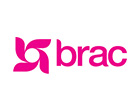Right after the Rana Plaza collapse, a special committee from the Bangladesh Prime Minister’s Office decided that BRAC would assist in the rehabilitation of amputation survivors. Specialising in upper limb prosthetics support, BRAC’s limb and brace centre (BLBC) has been providing these services, frequently working with the government and other NGOs to reach those who have lost limbs through accidents and diseases.
But losing a limb not only maimed the survivors physically and emotionally; it took a toll on them financially. Most worked at Rana Plaza as their families' primary breadwinners. Now their financial prospects were uncertain and their families' wellbeing at risk. BRAC partnered with Benetton Group on a series of projects that helped survivors re-establish financial security through skills development training and the allocation of grants to start new businesses.
After project participants were selected, they were brought to BLBC to be measured for prosthetic limb fitting. Doctors found that some amputees had a problem with the size of their stump, or where the limb was amputated. The surgeons who had performed the emergency operations most likely didn't consider the possibility of there being an artificial limb later. “This posed a challenge, because there needs to be enough space on the shoulder for the upper limb prosthesis to attach and fit onto,” said Dr Md Shahinul Hoque Ripon, senior programme manager at the BLBC in Dhaka.
But BLBC doctors did not give up. Just six months after surviving the collapse, these amputees received their new prostheses. Manufactured by Endolite, they arrived within a month of being ordered. Recipients returned to the BLBC for their fittings and remained at the centre for two weeks to learn how to use them. Many were initially put off by the unfamiliarity and heaviness associated artificial limbs even though they are scientifically designed to feel as normal as possible. “It is also a challenge because statistics show that, globally, upper prosthetic limb usage is only 30-40 percent among those who have one,” said Dr Ripon. “On the contrary, usage for lower prosthetic limbs is 80-90 percent.” Dr Ripon attributes this to the idea that upper limb prostheses are more for aesthetic reasons, while lower limb prostheses allow for greater ease of mobility. This discrepancy is one reason why BLBC is seeking ways to encourage increased acceptance and use of artificial limbs by recipients as part of its efforts to improve amputees' lives.
In fact, finding ways to motivate recipients to regularly use their prostheses is the biggest hurdle. Since acceptability is a major challenge, recipients were reminded that the more they used their new limbs the more functionality would improve, and along with it, comfort. They were also encouraged to wear their prostheses regularly to build shoulder and stump muscle strength over time and increase mobility.
The trauma associated with a disaster like the collapse of Rana Plaza called for focused treatment. Prosthetic limb recipients received individual psychosocial counselling from BRAC University’s Institute for Educational Development (IED). “Some referred to physical discomfort, financial hardships, or stigma associated with being an amputee,” said Puja Gloria Rodrigues, an IED counsellor. “We were there to provide emotional support and help modify their thought process to stay positive.”
BRAC aimed for this project to be as holistic as possible. Since receiving their initial prosthetics limb training, program participants also received livelihood grants, attended skills development training, and started new business ventures with the seed funding provided. Every month they have been brought back to the BLBC for follow-ups and for a health and wellness check with doctors from the National Institute of Traumatology and Orthopaedic Rehabilitation (NITOR) and BLBC as well as with Endolite representatives. During these visits, staff recipients'/participants' feedback, evaluate their progress and adjust their approaches to make improvements to the project. Dr Ripon said that, along with his team, he had observed the challenges faced by the program participants and is aware that they must be addressed. Looking forward, doctors at the BLBC are working with NITOR to address issues with acceptability, frequency of usage, comfort and are even in the process of designing more durable and light prostheses.
 About BRAC
About BRAC
BRAC – the world’s largest development organisation and a global leader in creating opportunities for the poor – started as a limited relief operation in 1972, in a remote village of Bangladesh. It has since spread antipoverty solutions to 11 other developing countries in Asia, Africa and the Caribbean. Organising the poor using communities’ own human and material resources, BRAC catalyses lasting change, creating an ecosystem in which the poor have the chance to seize control of their own lives.
BRAC does this with a holistic development approach geared toward inclusion, using tools like healthcare, education, microfinance, disaster management, environment and climate change, legal services, community empowerment and many more. Currently, more than 135 million people are being reached through BRAC staff and BRAC-trained entrepreneurs numbering in the hundreds of thousands. BRAC employs 45,918 regular staff and over 69,434 project staff. Its total expenditure was 546 Million USD in 2013.
For more info about BRAC, please see www.brac.net